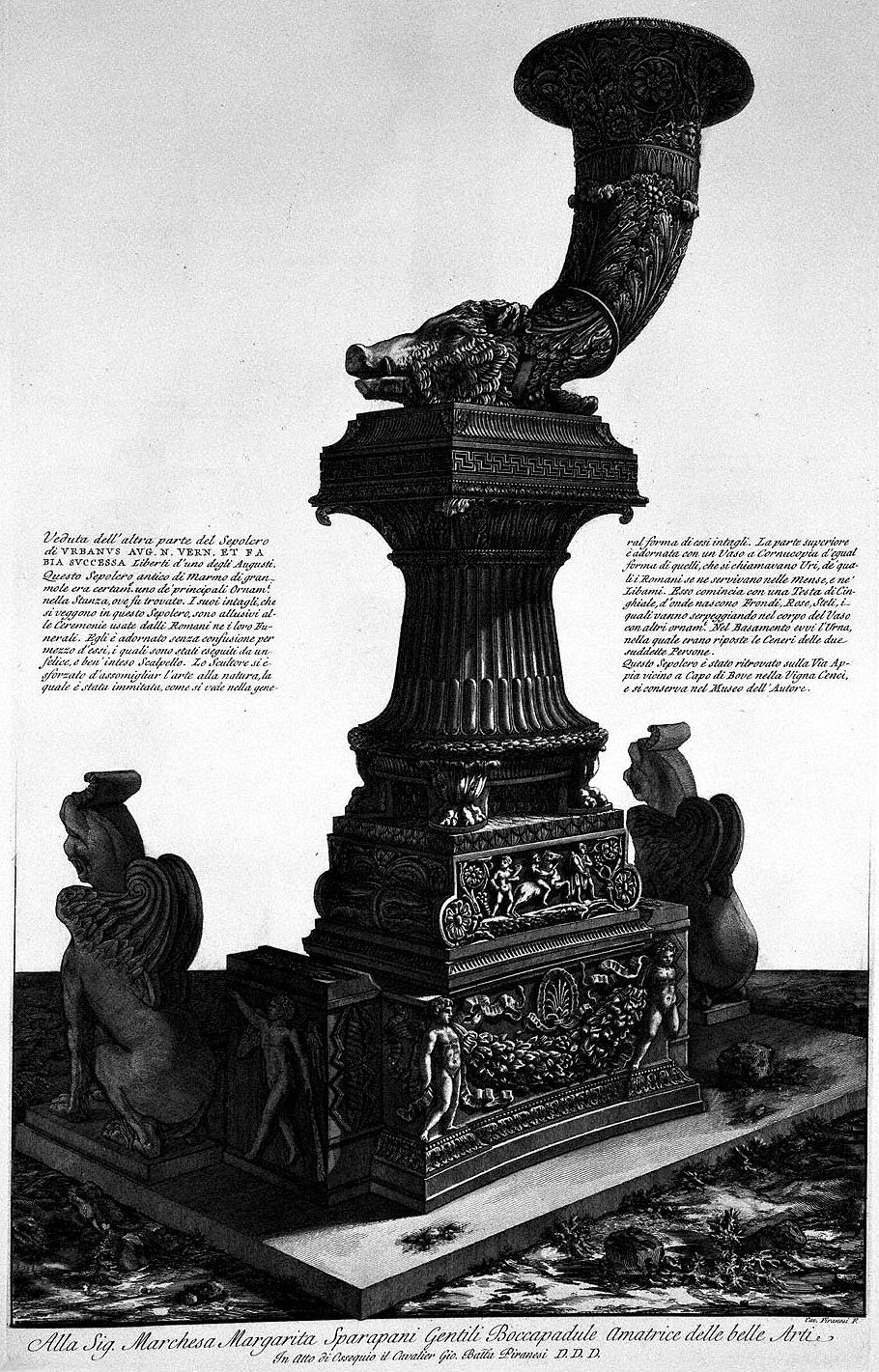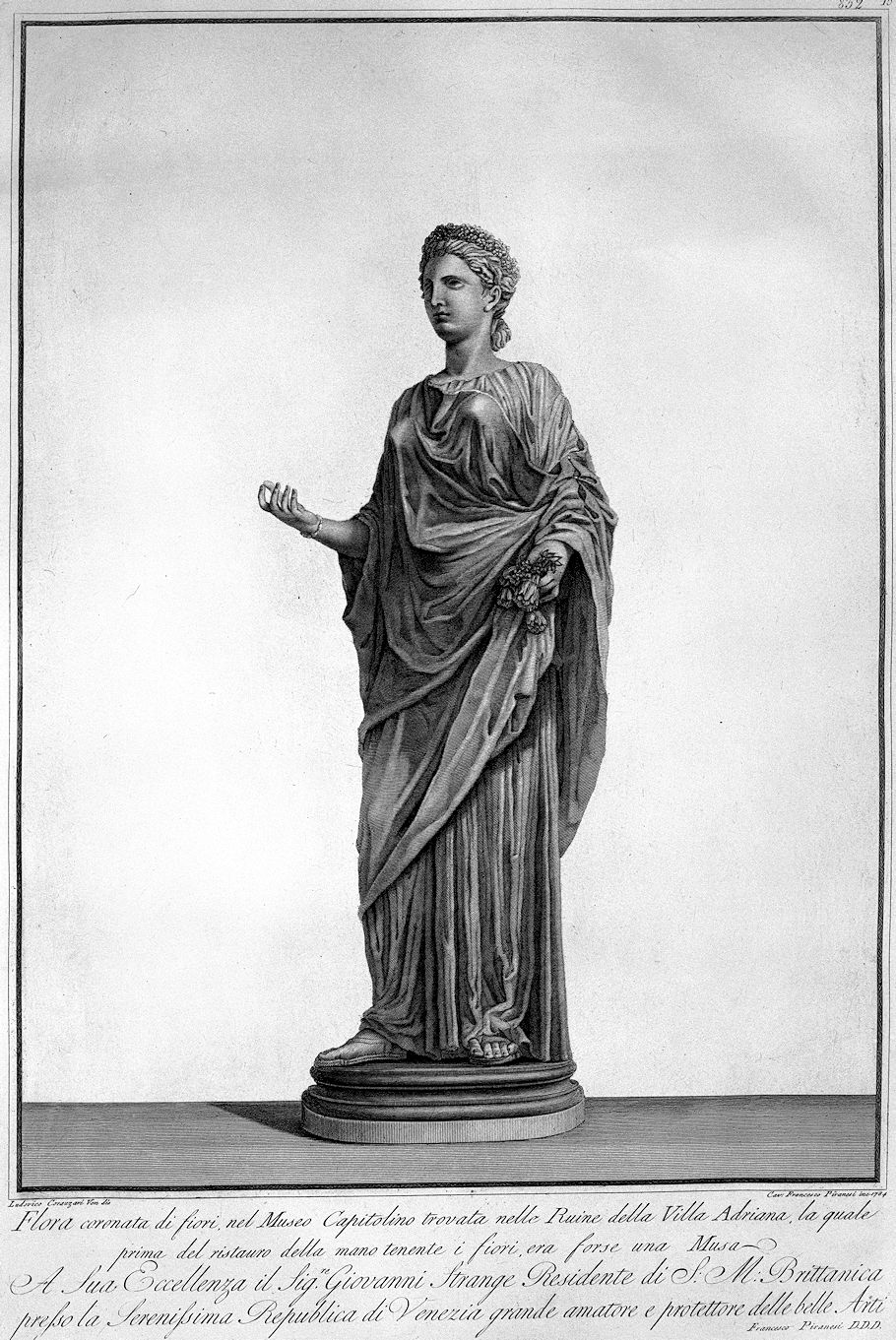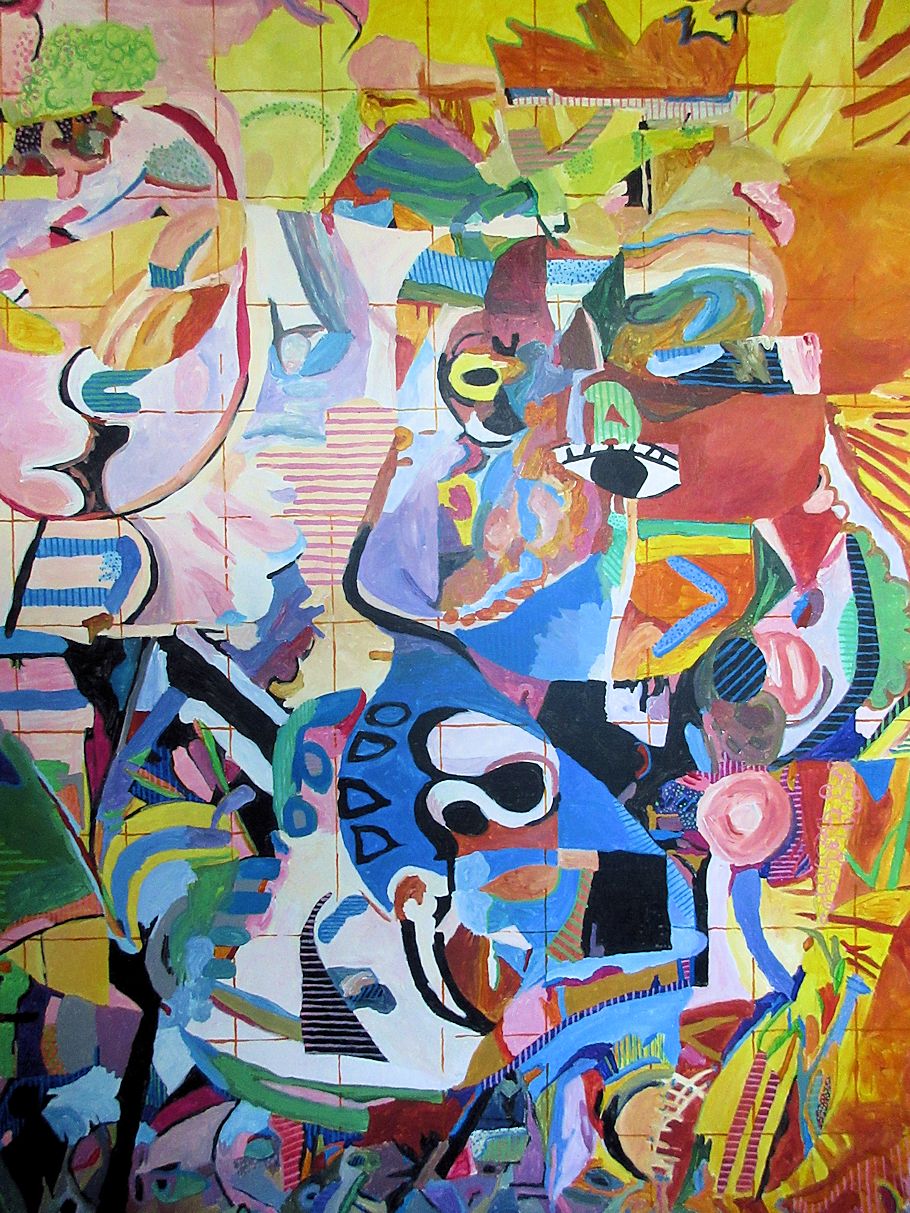3 May 1778 Sunday
Vases, Candelabra, Grave Stones, Sarcophagi. Tripods, Lamps and Ancient Ornaments volume II

To the Marchesa Margarita Sparapani Gentili Boccapadule, lover of the fine arts
In Act of Obsequiousness Cavalier Gio. Batt(ist)a Piranesi D. D. D.
View of the other side of the Sepulcher of Urbanus, Aug(usti) N(ostri)/ verna et / Fabia Successa. Get rid of one of the Augusti. This ancient marble sepulcher of great bulk was certainly one of the main ornaments in the room where it was found. His carvings, which can be seen in this Sepulchre, allude to the Ceremony used by the Romans in their Funerals. He is adorned without confusion by means of them, which were executed by a happy and well-understood Chisel. The Sculptor has endeavored to resemble art to nature, which has been imitated, as can be seen in the general form of these carvings. The upper part is adorned with a Cornucopia-shaped vase of the same shape as those called Uri, which the Romans used in their tables and in their Libami. It begins with a Boar's Head, from which Fronds, Roses, Stems are born, which wind their way around the body of the Vase with other ornaments. In the Base there is the Urn, in which the Ashes of the two aforementioned Persons were placed. This Sepulcher was found on the Via Appia near Capo di Bove in the Vigna Cenci, and is kept in the Author's Museum.
Cav. Piranesi F.
25-26 y.o. Francesco Piranesi 1784
Collezione delle piu belle statue di Roma

Flora crowned with flowers, in the Capitoline Museum found in the ruins of Villa Adriana, which before the restoration of the hand holding the flowers, was perhaps a Muse
To His Excellency Mr. John Strange Resident of S. M. Brittanica at the Serenissima Republic of Venice great lover and patron of the fine arts
Francesco Piranesi D.D.D.
Ludovico Corazzari Ven drawn Francesco Piranesi engraved 1784.
3 May 1812 Sunday

Some rain in the night, morning foggy. Wind NE Eerly. Temperature 48° rose to about 56°. Dr. Moore called here after dinner having visited G. Robinson. he thinks him fast declining.
3 May 2015
2 May
As to your thinking that line drawing is not "the right way to approach what you're doing in this day and age," I have no idea what it is that you think I am doing. I, on the other hand, have a very clear idea as to what it is that I am doing, which is taking randomly chosen digital images and manipulating them via randomly chosen parametric effects (options provided by the graphic software). It is a learning process, an experimentation process, a note-taking (of technique) process, and ultimately a collection process (of what I call virtual paintings). Beyond that, some of the 'paintings' may become the inspiration for something entirely else.
For me personally, it's all become recreational-creativity-exercise that I engage in for an hour or two every other week or so.
Can you explain, at least, what it is that you think I am doing?
3 May 2017

3 May 2023 Wednesday
"The exceptional conditions of the Napoleonic Wars brought new American merchants to St Petersburg. Miers Fisher [Jr.] of Philadelphia was one of them. He came to Russia in 1809 as a business associate of his father and Josiah Orne of Salem, and he started his own commission business under the protection of the originally German house Meyer & Brüxner. Later he set up a joint venture together with John Venning, who had been active in St Petersburg since 1793 and concentrated on trade in linen with England. According to Fisher himself, it was because of Venning's expertise that he managed to sell manufactures to the Americans more cheaply than anyone else. Fisher claimed to have set up the first American trading house in Russia, and the firm did business under the name Miers Fisher & Co, from the summer of 1810.
Being versed in languages as well as sociable, Miers Fisher was a popular character among both fellow countryman and the Russians. The important merchants Joseph Peabody and Gideon Tucker became his firm's customers. A fabulous career was predicted for Miers Fisher, and the capable analyses of commercial prospects that he sent to Josiah Orne in Salem support these expectations. Fisher himself considered his chances to be good, and fifteen to twenty vessels had become his customers by mid-August 1811. Fisher could not handle more as he did not have enough cash for payments in advance the importers required. Even so, he estimated his profits at $20,000 in 1811. Fisher's rivals were unhappy about the firm's methods, especially with the rates of commission, which were lower than average. Fisher himself claimed that Consul Harris in particular was hostile to him. The short history of the firm came to an abrupt end with Fisher's sudden death in June 1813."
Kalevi Ahonen, From Sugar Triangle to Cotton Triangle: Trade and Shipping between America and Baltic Russia, 1783-1860, 2005.
"On 1 July 1809, a young Russian nobleman, Andrei Iakovlevich Dashkov (1777-1830), arrived in Philadelphia as the Russian Empire's first diplomat in the United States. Dashkov represented Emperor Alexander I in America during a turbulent decade of shifting alliances, blockades, embargoes, and wars and watched with a perceptive and sympathetic eye as the new republic was tested by party factionalism, sectional rivalry, and the War of 1812. Shortly after returning to St. Petersburg in 1819, Dashkov distilled his professional service, private encounters, extensive travel, and wide reading into a comprehensive 70-page analysis of America. Written in French, this unpublished manuscript is preserved with Dashkov's other papers in the State Archive of the Russian Federation. Although Dashkov's "Survey" for some reason remained unfinished, with crossouts, marginal notes, and occasional repetitions, when read together with his diplomatic reports and other writings it offers a fresh perspective on the early United States and is a testimonial to the sophistication and openness of Russian educated society in the early nineteenth century."
Daniel L. Schlafly Jr., "The First Russian Diplomat in America: Andrei Dashkov on the New Republic," 1997.
Believe it or not, Mr. and Mrs. Dashkoff were at Ury 20 June 1812 when they found out that Congress had declared war against Great Britain.
20 June 1812 Saturday
This evening M. & Mrs. Dashkoff and M. Cor[r]ea came hither [to Ury]. They had lost their way and got wet in a heavy shower at 6 o'clock. About 8 S[arah] and S[amuel] Longstreth came and brought me the newspaper with an Act of Congress declaring War against Great Britain!!!
Excerpt from an email sent today:
Yura and Katya, perhaps someday in the future the two of you can reenact the first Russian diplomat’s visit to Ury, i.e., where I live right now.
Steve
|